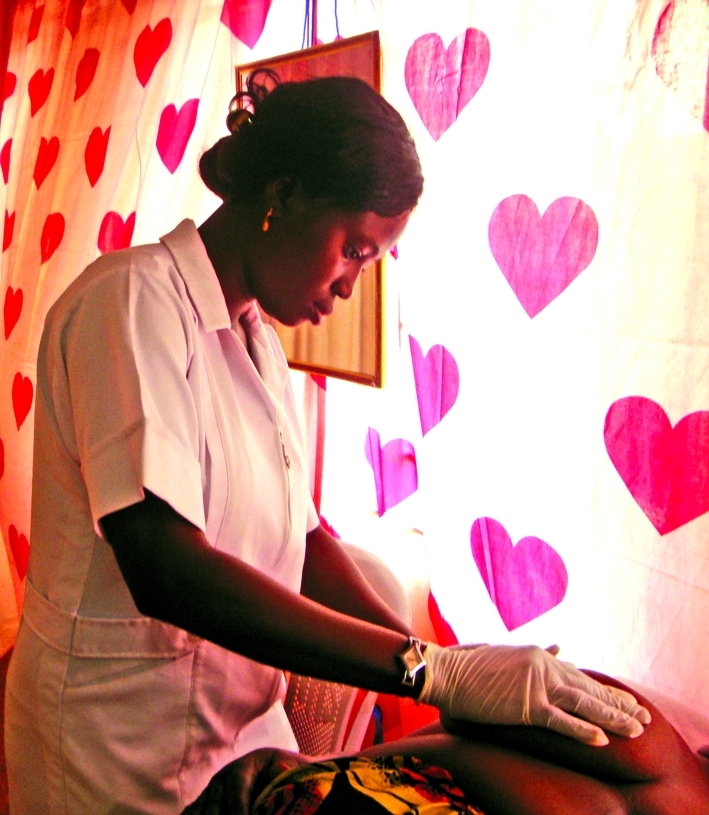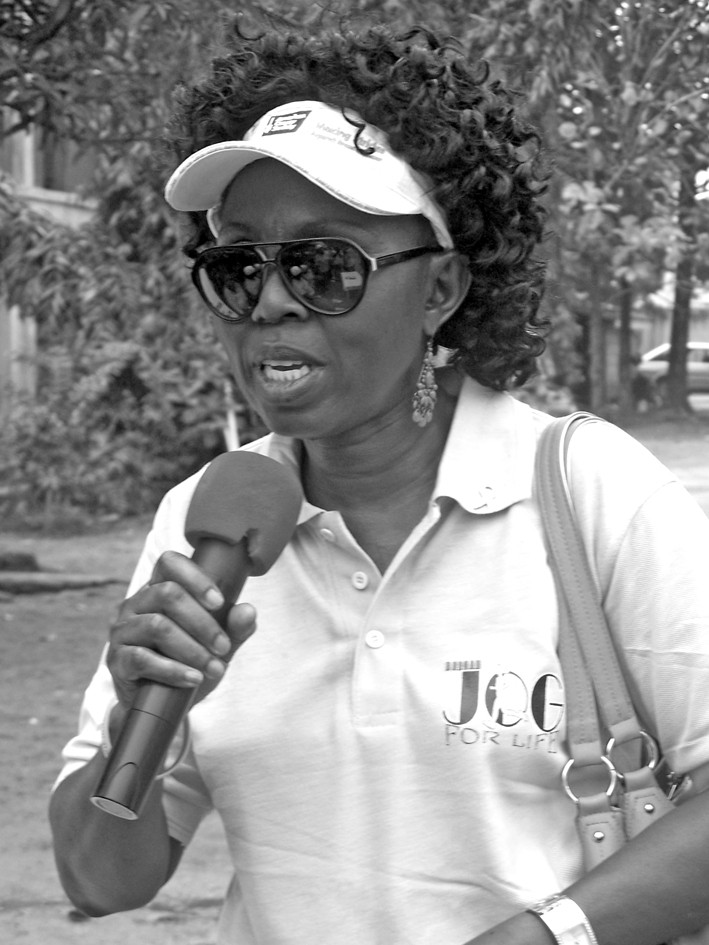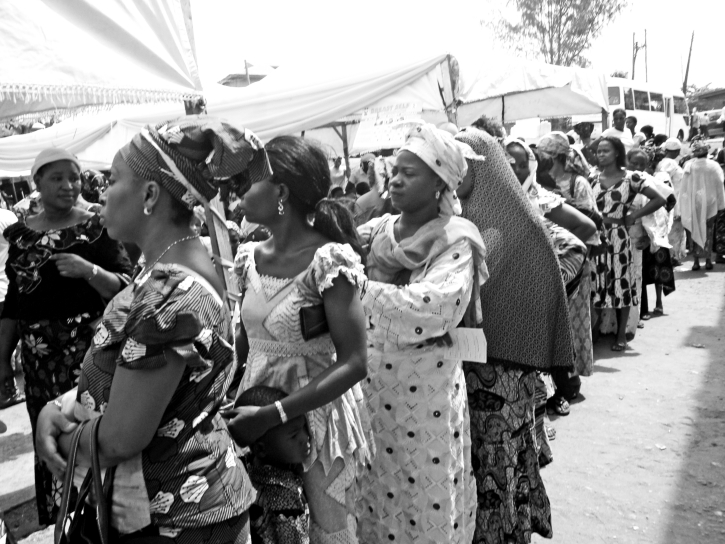Abstract
In developing countries, the majority of women diagnosed with breast cancer do not survive because their cancer is detected too late. Motunrayo Bello reports on the challenges of dealing with breast cancer in Nigeria.
“Having seen a champion who continues to live with the disease is very important for women with cancer.”
Felicia Knaul
“We see women accepting the disease, living with it until the case worsens.”
Olufemi Taiwo
Like many Nigerians, Betty Anyanwu-Akeredolu believed breast cancer was a “white woman’s disease”, something that could never happen to her. So when she felt a lump in her breast in 1997, she reacted as many of her countrywomen might have done: “I chose to keep it all to myself. I was hoping I could wish it all away.”
Several weeks later, however, she was inspired to seek treatment after seeing a documentary on Carol Baldwin, an American woman who was diagnosed with breast cancer and had a double mastectomy more than 20 years ago, and who has since become a leading campaigner and fundraiser for breast cancer research.
“I realized that I had to confront it,” says Anyanwu-Akeredolu. “I had to talk to someone, and I said to myself, ‘if what I felt just a few weeks ago turns out to be cancer, I will recover as this woman did’.”
Anyanwu-Akeredolu tells with pride how she received her full treatment, including a mastectomy and radiation therapy, at the University College Hospital in Ibadan. “Several Nigerian survivors tell stories of how they travelled to developed countries for treatment. But not many people have the luxury of this choice. The Nigerian health system is all they have. We have the health professionals with the skill and willingness to deliver better health care but they are constrained by the lack of infrastructure and an enabling environment.”
The desire to share her story prompted her to found the Breast Cancer Association of Nigeria, an organization that galvanizes action against breast cancer through public education, patient support, advocacy and research. “I was determined to speak out. Just as I needed to hear from someone who had recovered from breast cancer, I wanted to be that person other women could feel reassured by, the one to tell them that if I could recover here in Nigeria, so could they.”
Felicia Knaul, director of the Harvard Global Equity Initiative, Secretariat of the Global Task Force on Expanded Access to Cancer Care and Control in Developing Countries, also believes women with cancer need more role models, or ‘champions’ as she calls them. “Having seen a champion who continues to live with the disease is very important for women with cancer,” she says. “Survival rates are improving. With earlier detection and treatment, evidence from around the world demonstrates tremendous hope for survival and for many years of healthy life.”
Just as Anyanwu-Akeredolu did, Knaul decided to help others deal with the disease after being diagnosed with breast cancer in 2007 at the age of 41 in a clinic in Cuernavaca, Mexico and then receiving almost all of her treatment locally. Soon after her diagnosis, she founded Cáncer de Mama: Tómatelo a Pecho, a programme that promotes research, advocacy, awareness and early detection in Latin America.
Anyanwu-Akeredolu and Knaul’s support groups are important for promoting awareness of breast cancer in low- and middle-income countries, where illiteracy, religious beliefs and health, gender and social inequities often prevent women from having access to services and information, particularly on the importance of seeking treatment early if cancer is detected. Further, Knaul says, the advocacy power of breast cancer can be harnessed to promote broader efforts to empower women and to promote women’s health in general.
Knaul said stigma and discrimination also severely hamper women’s decisions and ability to seek medical advice if they find a breast lump. Women often struggle to “come out” publicly about their breast cancer for fear of being abandoned by their partners or of losing their jobs.
According to the International Agency for Research on Cancer, breast cancer is the most frequently diagnosed cancer among women, with an estimated 1.38 million cases diagnosed worldwide in 2008. It is also the most frequently reported cause of death from cancer in women in both developed and developing countries. Breast cancer survival rates vary greatly worldwide, ranging from 80% or more in North America, Sweden and Japan to around 60% in middle-income countries and less than 40% in low-income countries. The low survival rates in less-developed countries are mainly due to late diagnosis of the majority of cases.
Breast cancer prevention is not simply about educating and empowering women; equipping health workers with the appropriate skills and attitudes is also crucial. “In developing countries, many women arrive with late-stage tumours that could have been detected at the primary-care level. But we have not trained primary-care nurses and physicians to recognize the symptoms that could be related to cancer, to undertake clinical breast examination or to review family history of breast cancer. They have been trained to believe that these aren’t the major killers of poor people, so they shouldn’t be looking out for them, and they aren’t.”
Early detection does not necessarily depend on expensive diagnostic equipment. In countries that don’t have widely available mammography technology for mass screening, routine clinical examination performed by well-trained community health workers, nurses and physicians can help diagnose more cases earlier. The International Agency for Research on Cancer is currently undertaking a trial involving 120 000 women to evaluate the role of an intervention 'package' that includes awareness and clinical breast examination in reducing breast cancer mortality, in collaboration with the Regional Cancer Centre in Trivandrum, India.
Detection is just the first step. The next step is to make sure the patient receives the results of appropriate tests and is guided to treatment. “Many women won’t come forward because they don’t want to go through the surgery and the stigma if they think they are going to die anyway,” says Knaul.
“When certain technologies are not available, it is important to give patients other options, such as recommending mastectomy instead of a lumpectomy if radiation therapy is not available and surgery is feasible. Ethically we have to offer the best possibility of survival for each woman given the environment and reality that she is living.”
Knaul believes that much more can be done at the primary level and that hospitals may not always be the best places to treat cancer patients in developing countries, particularly when long-term chemotherapy schedules may require women to travel far from home and their families. “Bringing the treatment closer to the patient, such as offering chemotherapy in local clinics, could be a better option. Here’s an opportunity to identify, in a scientific, evidence-based manner, more appropriate technologies for delivering much of this care.”
Olufemi Taiwo, the director of disease control at the Ministry of Health in Lagos State, said the state government was committed to reducing cancer incidence rates, especially the incidence of breast cancer, the most common malignancy affecting women of child-bearing age in Nigeria.
Since 2006, the ministry has run an awareness programme to educate women on breast self-examination that has involved building strong partnerships with religious and community leaders. “We are now getting into the schools, markets, churches and mosques, holding more health talks, distributing letters and information leaflets. There is still so much ground to cover,” she says.
Anyanwu-Akeredolu says the Breast Cancer Association of Nigeria has developed a wellness programme named Breakfast Aerobics to promote a healthy lifestyle through exercise, a balanced diet and information about breast self-examination.
According to Taiwo, many women did not seek medical advice because they believed the treatment would be too costly. “We see women accepting the disease, living with it until the case worsens. But we have made efforts to reduce this burden by designating six general hospitals around the state where lumpectomy is done free of charge.” At the University College Hospital, Ibadan, free screening and treatment advice is offered to poorer women. Since 2010, needy out-patients visiting this hospital for treatment have had free accommodation at the Hope Lodge run by the Breast Cancer Association of Nigeria. “This is a giant step towards reducing the burden that rests heavily on the shoulders of family members,” says Anyanwu-Akeredolu.
Taiwo said the ministry was collaborating with health experts to develop a comprehensive cancer control policy for the state and try to improve its weak cancer data collection. She said Nigeria’s recently launched universal coverage insurance would cover cancer treatment, but the details “were still being worked out”.
Anyanwu-Akeredolu believes a more coordinated approach is needed to tackle Nigeria’s high cancer morbidity and mortality. “We now have many nongovernmental organizations working in isolation and causing duplication across the sector. I strongly believe we could achieve so much more if we were all to come together to fill the gaps and contribute comprehensively with government in formulating effective policies.”
Awareness programmes are showing signs of success, with more women being screened and treated for breast cancer. “We are now regularly inundated at cancer hospitals across the state with referrals from screening programmes in the communities,” says a doctor in the oncology unit at Lagos State University Teaching Hospital.
What is needed now are funds and commitment to improving treatment for women once they are diagnosed, she says. The lack of access to diagnostic and radiography equipment, particularly for rural women, is a serious problem. “The mammography machine here in the oncology unit doesn’t even work at present, nor are we able to do radiotherapy for now so we have to refer patients to other hospitals,” she says. “With a population of almost 160 million people, a few functioning mammogram machines are just not enough!”

A nurse does a breast examination at a clinic in Ikorodu, Lagos
Lagos Ministry of Health

Betty Anyanwu-Akeredolu, founder of the Breast Cancer Association of Nigeria, shares her story to reassure other women diagnosed with breast cancer
Ramak Photos
Women line up for free breast cancer screening and information
Lagos Ministry of Health



